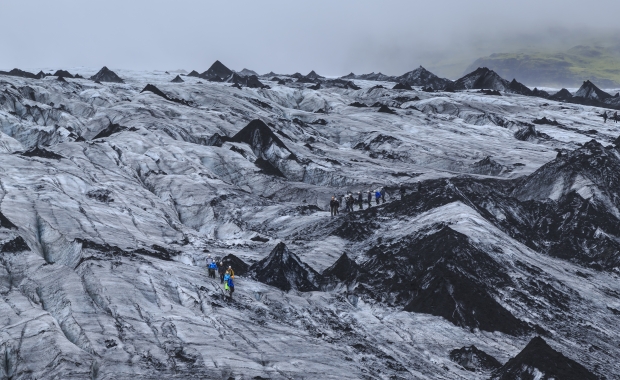The earthquake swarm in Katla volcano has fizzled out. Ten smaller earthquakes followed the magnitude 3.3 quake that struck early in the morning of 22 September, but things are now back to normal.
However that does not mean everything is calm in Iceland. Last week (between 14 and 20 September) the Icelandic Met Office’s (IMO) South Iceland Lowland (SIL) earthquake monitoring network picked up 510 earthquakes around the country.
The strongest earthquakes of the week were measured in Torfajökull glacier and at Herðubreið mountain, both located in the central highlands. Both were magnitude 2.3.
Read more: An earthquake swarm hits the beast of a volcano Katla
According to IMO small earthquake swarms occurred at Fagradalsfjall mountain on the Reykjanes peninsula and at Herðurbreiðartögl mountains in the central highlands. About 60 events were detected under Mýrdalsjökull glacier, around half of which occurred in the Katla caldera, preceding the larger quake that struck yesterday’s night.
Why this action?
This kind of activity is not uncommon. The reason for Iceland being constantly shaken and stirred is that the country lies on the divergent boundary between the Eurasian plate and the North American plate. It also lies above a hotspot, the Iceland plume, which is believed to have caused the formation of the island some 16 to 18 million years ago. Accordingly we have repeated eruptions and seismic activity, and, of course, an abundant of geothermal energy.
What is the SIL system?
IMO’s automatic SIL monitoring network has been in operation for almost two decades. Besides evaluating source function and mechanism information carried from below by micro-earthquakes, it provides near real-time information that is used as the basis for an alert system.
The earthquake swarm in Katla volcano has fizzled out. Ten smaller earthquakes followed the magnitude 3.3 quake that struck early in the morning of 22 September, but things are now back to normal.
However that does not mean everything is calm in Iceland. Last week (between 14 and 20 September) the Icelandic Met Office’s (IMO) South Iceland Lowland (SIL) earthquake monitoring network picked up 510 earthquakes around the country.
The strongest earthquakes of the week were measured in Torfajökull glacier and at Herðubreið mountain, both located in the central highlands. Both were magnitude 2.3.
Read more: An earthquake swarm hits the beast of a volcano Katla
According to IMO small earthquake swarms occurred at Fagradalsfjall mountain on the Reykjanes peninsula and at Herðurbreiðartögl mountains in the central highlands. About 60 events were detected under Mýrdalsjökull glacier, around half of which occurred in the Katla caldera, preceding the larger quake that struck yesterday’s night.
Why this action?
This kind of activity is not uncommon. The reason for Iceland being constantly shaken and stirred is that the country lies on the divergent boundary between the Eurasian plate and the North American plate. It also lies above a hotspot, the Iceland plume, which is believed to have caused the formation of the island some 16 to 18 million years ago. Accordingly we have repeated eruptions and seismic activity, and, of course, an abundant of geothermal energy.
What is the SIL system?
IMO’s automatic SIL monitoring network has been in operation for almost two decades. Besides evaluating source function and mechanism information carried from below by micro-earthquakes, it provides near real-time information that is used as the basis for an alert system.







